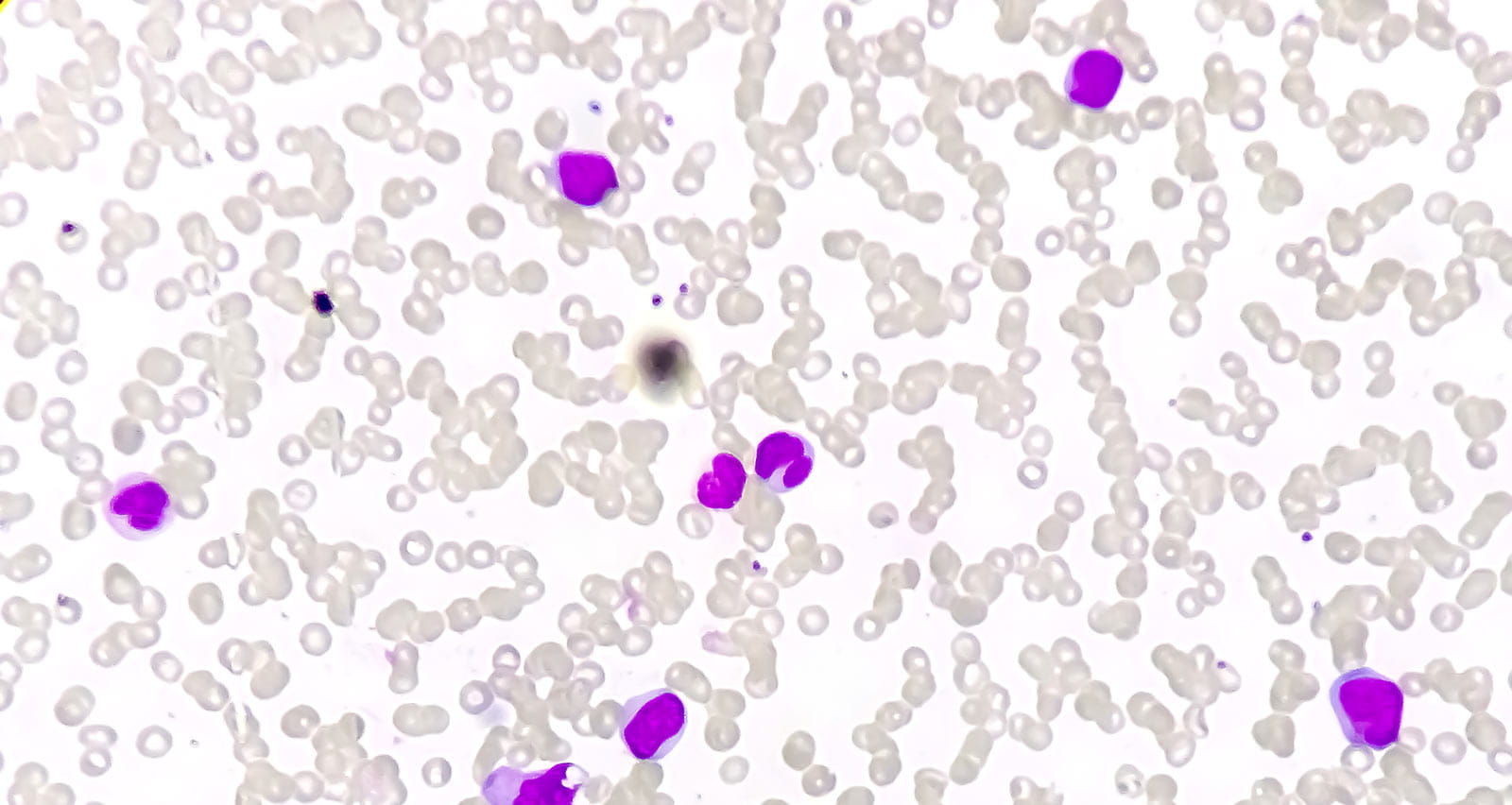
What Is Acute Myeloid Leukemia (AML)?
Leukemias are cancers that start in cells that would normally develop into different types of healthy blood cells. Acute myeloid Leukemia (AML) is the most common type of acute leukemia found in adults, which are leukemias that progress rapidly. AML begins in the bone marrow, which is the spongy material found inside the large bones of our bodies.
Most often, AML develops from certain cells that would normally turn into white blood cells (other than lymphocytes). AML can also begin in other types of blood-forming cells. The cancer cells in AML often move into the bloodstream after growing in the bone marrow. AML sometimes spreads from the bone marrow and blood to other parts of the body, including the lymph nodes, liver, spleen, central nervous system and testicles.
Other names for AML include acute myelocytic leukemia, acute myelogenous leukemia, acute granulocytic leukemia and acute non-lymphocytic leukemia.
Your health is important. Get expert care.
Offering in-person, video and telephone visits. Call 216-844-3951 today to see which option is right for you.
Learn more about virtual visitWhat Causes Acute Myeloid Leukemia?
AML occurs due to changes in the genetic material (DNA) in bone marrow cells. Doctors don’t yet know the exact causes of these genetic changes. However, certain risk factors are associated with AML, including:
- Sex: Males have a higher risk of AML than women.
- Age: In adults, the risk of AML increases with age.
- Family history: While most cases of AML are not thought to have a strong genetic link, having a close relative (especially a parent, brother or sister) may increase a person’s risk of getting AML.
- Chemical exposure: Contact with certain chemicals is linked with some types of leukemia. For example, exposure to benzene may raise person’s risk for getting AML.
- Radiation exposure: Exposure to high doses of radiation increases a person risk for AML and other leukemias.
- Chemotherapy for cancer treatment: People who get chemotherapy for cancer treatment are at a higher risk of acquiring AML at a later time.
- Rare congenital diseases: Having certain genetic disorders at birth, such as Fanconi anemia, Bloom syndrome and Ataxia-telangiectasia, increases a person’s risk for developing AML.
- Smoking: Cigarette smoke, which contains benzene and other known cancer-causing chemicals, is linked to higher risk of AML.
Signs and Symptoms of Acute Myeloid Leukemia
Signs and symptoms of early-stage AML may be similar to those caused by the flu and other common diseases. Common signs and symptoms of AML include:
- Lethargy and fatigue
- Fever
- Bone pain
- Shortness of breath
- Pale skin
- Easy bruising
- Unusual bleeding, such as frequent nosebleeds and bleeding from the gums
- Frequent infections
Note that other cancers and illnesses can cause the above symptoms. Make sure to tell your doctor about any symptoms you may have.
How Is Acute Myeloid Leukemia Diagnosed?
As an acute leukemia, AML can progress quickly. An accurate diagnosis and treatment plan are essential.
Procedures and tests used to diagnose AML include:
- Blood tests: A complete blood count (CBC) with differential test is used to measure the number of white blood cells, red blood cells and platelets in a blood sample. If a CBC test suggests leukemia, an AML diagnosis can sometimes be confirmed with additional blood testing, but often a bone marrow test is needed to confirm diagnosis.
- Bone marrow test (bone marrow aspiration and biopsy): During this test, a needle is used to extract a bone marrow sample from the hipbone or breastbone. Lab analysis will classify the blood cells in the marrow sample and determine if it contains leukemia cells. The test also looks for changes in leukemia cells and identifies whether those cells originated as B lymphocytes or T lymphocytes, which helps your doctor develop your treatment plan.
- Spinal fluid test: Also called a lumbar puncture test or a spinal tap, a spinal fluid test may be used to extract a sample of spinal fluid (the fluid that surrounds the brain and spinal cord) to check for the presence of cancer cells.
- Laboratory testing for AML subtype: AML is classified into a number of subtypes based on how mature the cancer cells are at the time of diagnosis and the extent to which those cells are different from normal cells. Lab analysis of an AML patient’s leukemia cells can determine the subtype, which is important because knowing the subtype can affect both a patient’s outlook and treatment. For example, acute promyelocytic leukemia (APL) is an AML subtype that is typically treated with drugs not used with other AML subtypes.
- Imaging tests: Imaging tests such as an X-ray, a computerized tomography (CT) scan or an ultrasound scan will be ordered if your doctor suspects that the cancer has spread outside of the blood and marrow to the brain and spinal cord or other parts of the body.
How Is Acute Myeloid Leukemia Treated?
Treatment for of AML is usually divided into two phases:
- Induction Therapy: During this phase, the goal is to kill most of the leukemia cells in the blood and bone marrow and to restore production of normal blood cells.
- Consolidation Therapy: Also called post-remission therapy and remission continuation therapy, this phase of treatment focuses on destroying any remaining leukemia cells that may not be active but could regrow and cause a relapse of the cancer.
A third phase, known as maintenance or post-consolidation therapy, is sometimes used after consolidation. During maintenance therapy, treatment is given over a longer period of time and typically at lower doses. Maintenance therapy may be recommended for some patients who are at a higher risk for relapse.
Some combination of the following treatment approaches may be used:
- Chemotherapy
-
Chemotherapy is the use of drugs to kill cancer cells and is the primary treatment used during AML induction therapy, but may also be used during consolidation therapy. Most often, chemotherapy drugs are injected directly into a vein, a muscle or under the skin, or else taken orally. By entering the bloodstream, chemotherapy drugs are able to reach leukemia cells throughout the body.
- Targeted Therapy
-
Targeted therapy is a treatment method that uses drugs or other substances to identify and attack specific cancer cells. In general, targeted therapies cause less harm to normal cells than standard chemotherapy or radiation therapy. A patient’s leukemia cells can be tested to identify a targeted therapy. During all phases of AML treatment, targeted therapy may be used alone or in combination with chemotherapy.
- Radiation Therapy
-
Radiation therapy uses high-powered beams, such as X-rays or protons, to destroy cancer cells. Radiation therapy is usually not part of the main treatment for people with AML. However, it is used in certain situations, such as when the leukemia has spread outside of the bone marrow and blood to other areas of the body, such as the brain, spinal fluid or testicles.
- Bone Marrow Transplant
-
A bone marrow transplant, also known as a stem cell transplant, may be used as a consolidation therapy and to treat relapses. This procedure replaces abnormal bone marrow with marrow from a healthy donor. The procedure is performed after high doses of chemotherapy or radiation are employed to destroy leukemia-producing bone marrow.
The Stem Cell Transplant Program at UH Seidman Cancer Center has provided advanced bone marrow and cord blood transplant services for more than 45 years. Since the program’s inception, we’ve performed over 3,500 stem cell transplants.
Acute Myeloid Leukemia Prognosis
AML is an aggressive, life-threatening cancer. However, a patient’s outcome depends on a number of factors, including the subtype of AML, the patient’s age and the result of other lab testing. Although AML is a serious illness, it is often treatable and even curable with chemotherapy with or without a bone marrow/stem cell transplant.

Clinical Trials Available for Acute Myeloid Leukemia and Other Types of Leukemia
Access to innovative treatments, including leukemia-specific clinical trials with targeted agents, gives patients more treatment options. We offer new therapies that are safer, more tolerable and more targeted to help minimize side effects. Our physicians are the principal investigators for many of these cancer clinical trials, offering hope to both newly diagnosed leukemia patients and those who have relapsed.
Clinical Trials for Leukemia
Giving to UH Seidman
Make a gift today to support leukemia research and patient care at UH Seidman Cancer Center.
Ways To Give

